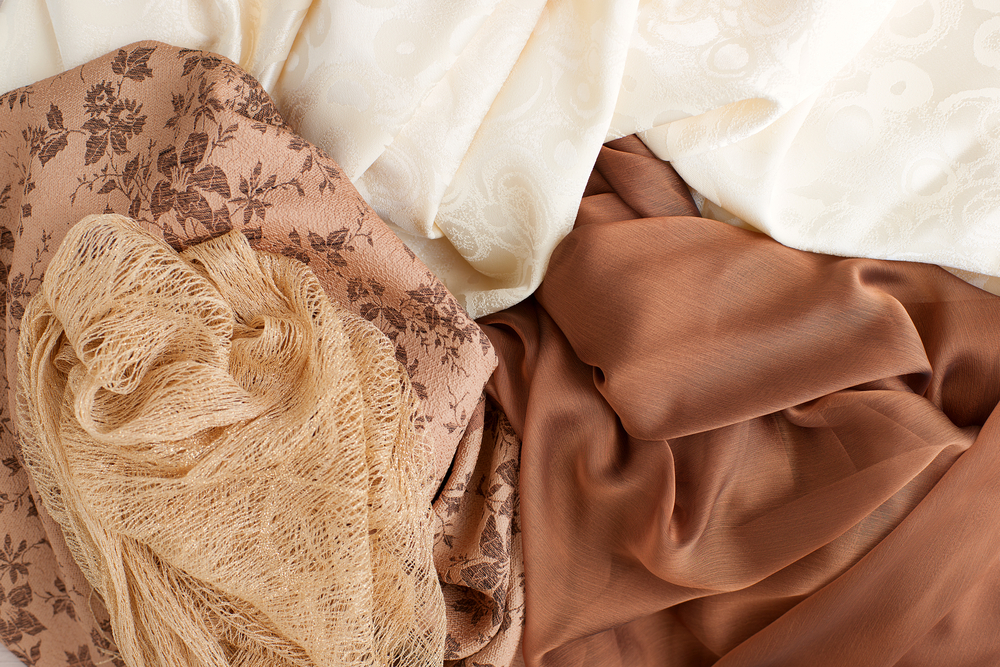
When you’ve decided to tie the knot, there are many decisions to make. Beyond a few rules related to the legality of your union, Canada doesn’t restrict wedding customs and details, including attire. As you’re planning and evaluating, you’ll need to think about the type of fabrics used in your outfits for the big day.
Factors To Consider
Fabric selection can make or break your nuptials. Some fabrics may look great in a photo, but they may not be as comfortable or practical as others, especially for long wear. The way fabric looks is important, but carefully consider the date, time, and venue when making choices. Some fabrics work well with structured garments, while others lend themselves to draping. It’s your wedding day, and while it’s all about the two of you, do consider the needs of others who are participating.
Fabrics You’re Sure To Love
Think about these materials for your wedding-day outfits:
- Charmeuse: If you’re looking for a light fabric that feels luxurious, charmeuse is the fabric for you. Although typically made of silk, synthetic versions also exist. Garments made from this cloth tend to have a “slinky” look and feel that’s fabulous, but they can be unforgiving when it comes to hiding details.
- Chiffon: Noted for its lightweight and sheer look, this woven fabric is often a go-to as an overlay to weightier fabrics. Chiffon can be worn in multiple layers for effect, but it is easy to snag.
- Lace: When it comes to an elegant touch, few fabrics can compare to lace. Known for its open weave, lace tends to work as an overlay or a detail for a dress made of more substantial fabric. Different types of lace exist, varying in detail and weight. Lace also snags easily.
- Organza: You can think of organza as a stiffer version of chiffon. Whereas chiffon drapes easily, dressmakers choose organza for more structured gowns. Despite this, it is a very lightweight fabric that lends itself well to warm-weather events.
- Satin: Technically not a fiber, satin refers to a finish of a fabric made up of silk, polyester, or other synthetic fibers. Satin is noted for its versatility and durability, working especially well in the cooler parts of the year. The material looks great ruched, draped, or in ballroom-style gowns.
- Tulle: Regarded for its light, netting-like appearance, tulle is a very delicate fabric that pulls or snags easily. Garments made of tulle have a very airy and ethereal style.
Fabrics That “Suit” You
When it comes to suits, tuxedos, and sportscoats, think about these fabrics:
- Cashmere: A 100% cashmere suit is very soft and elegant, but the “shiny” look may not be what you’re going for. A blend of cashmere with another fabric such as wool often provides the right combination of softness, warmth, and body.
- Cotton: For all-around comfort and breathability, you can’t go wrong with cotton. If your style is more casual, cotton suits the bill.
- Linen: For outdoor daytime gatherings, a linen suit works really well; however, this lightweight fabric also wrinkles very easily. While a few wrinkles can be part of the charm, a light-colored suit may look worse for wear after a long day.
- Silk: Suits made of silk convey luxury and comfort. Generally more expensive, silk suits are also nice for temperature control.
- Velvet: Coats made of velvet are especially touchable. This breathable fabric offers an elegant look that coordinates well with denim for a quirky yet stylish effect.
- Wool: When it comes to suits, wool reigns supreme. Noted for softness and versatility, wool suits are appropriate at any time of the year.
When it comes to clothing, details matter. This is especially true for the fabric in your wedding-day outfits. While appearance is important, be sure to consider other factors such as comfort, temperature, and various body shapes.


